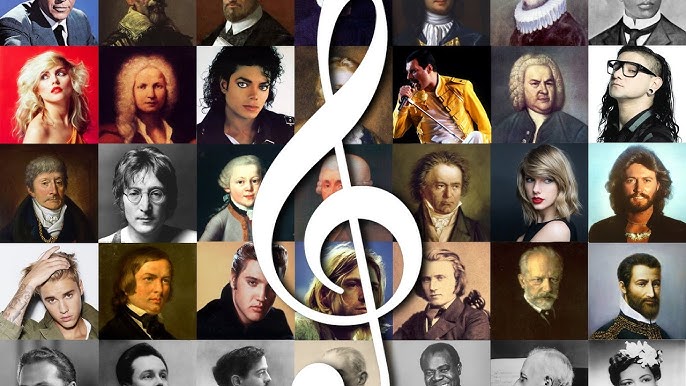
The world of music discovery has evolved dramatically over the past decade, thanks to the rise of streaming services and digital music platforms like Spotify, Apple Music, and YouTube. One of the most significant changes in how we consume music is the shift from traditional album-based listening to the creation and consumption of playlists. With millions of songs at our fingertips, playlists have become the primary way we engage with music, and their influence is only growing.
However, the creation of these playlists isn’t as simple as it seems. There are two main forces at play when it comes to playlist curation: algorithmic playlists powered by data and machine learning, and human-curated playlists crafted by tastemakers, influencers, and music experts. As we look toward the future of playlist creation, the question arises—how will the balance between algorithmic and human-curated playlists evolve? Will algorithms dominate the future of music discovery, or is there still a place for the expert touch of human curators?
In this article, we will explore the evolution of playlist creation, the strengths and limitations of both algorithmic and human-curated playlists, and what the future holds for this essential aspect of music culture.
1. The Rise of Algorithmic Playlists: Data-Driven Music Discovery
In the early days of streaming, music discovery was often driven by word of mouth, traditional media like radio, or curated albums. However, with the advent of platforms like Spotify, Apple Music, and others, playlists became the central hub for discovering new music. One of the most transformative developments in playlisting has been the rise of algorithmic playlists.
How Algorithmic Playlists Work
Algorithmic playlists use complex data sets and machine learning algorithms to analyze user behavior, listening habits, and preferences to create personalized playlists. These playlists are tailored to each listener, suggesting songs based on the songs they’ve liked, skipped, or frequently played.
Popular examples of algorithmic playlists include:
- Spotify’s “Discover Weekly”: A personalized playlist generated each week that introduces users to new music based on their listening history.
- Apple Music’s “For You”: A similar personalized playlist that offers recommendations tailored to your musical tastes.
- YouTube’s “Up Next”: A playlist that automatically populates based on your video history and engagement with similar content.
The Strengths of Algorithmic Playlists
- Personalization: Algorithmic playlists offer a unique listening experience tailored to the individual. The more you listen, the more the algorithms learn about your preferences, leading to highly personalized recommendations.
- Discovery of New Music: Algorithms are excellent at helping listeners discover songs and artists they may never have come across on their own. By analyzing listening patterns, algorithms can suggest tracks that align with a person’s taste, introducing them to new genres, artists, and subcultures.
- Endless Content: Since algorithms pull from a vast database of songs, there’s a virtually endless stream of music available. This makes it easier for listeners to stay engaged and find fresh tunes without searching through thousands of songs manually.
The Limitations of Algorithmic Playlists
- Lack of Context: While algorithms can generate personalized playlists based on data, they often miss the emotional or contextual nuance behind song selection. For example, an algorithm might suggest a song because it matches your listening history but fail to consider the emotional tone you’re seeking in a playlist.
- Repetitiveness: Over time, algorithmic playlists can become repetitive. Since the algorithm mostly suggests songs based on patterns of past behavior, there’s a risk of listening to the same types of songs repeatedly. This can sometimes make the listening experience feel monotonous, especially if you’re looking for diversity or variety.
- Over-Emphasis on Popularity: Many algorithms prioritize songs that are popular or trending, which can often lead to an over-saturation of mainstream music. As a result, niche genres or emerging artists may get overlooked in favor of more commercially successful tracks.
2. The Rise of Human-Curated Playlists: The Personal Touch
While algorithms can churn out personalized playlists, human curators add a distinct personal touch that machines often cannot replicate. Human-curated playlists involve expert selectors, tastemakers, influencers, and even ordinary users who craft playlists based on specific themes, moods, or cultural moments.
How Human-Curated Playlists Work
Human-curated playlists are handpicked by individuals or groups who bring their expertise and subjective taste to the process. These curators may be music industry professionals, DJs, influencers, or even fans with a deep knowledge of specific genres. The curators typically focus on crafting playlists with a specific theme or emotional narrative in mind, such as playlists for workout motivation, romantic dinners, or seasonal vibes.
Popular examples of human-curated playlists include:
- Spotify’s “New Music Friday”: A playlist curated by Spotify’s editorial team featuring the latest tracks across genres.
- Apple Music’s “Best of the Week”: A handpicked selection of new releases, curated by Apple Music editors.
- Influencer-curated playlists: Many influencers and music bloggers curate playlists for their followers, showcasing their unique musical tastes and preferences.
The Strengths of Human-Curated Playlists
- Cultural Relevance: Human curators often have a better sense of the current cultural moment. They can tap into emerging trends, underground movements, or global influences that algorithms may miss. This allows human curators to create playlists that resonate with listeners on a deeper, more emotional level.
- Thematic and Emotional Resonance: Curators are able to craft playlists that tell a story or fit a specific emotional tone, such as a summer road trip playlist or a playlist for self-reflection. The ability to create these thematic, emotionally charged playlists is something that algorithms often struggle with.
- Diversity and Variety: Human curators are able to push beyond the mainstream, offering a mix of both popular and niche tracks. They can introduce listeners to hidden gems, up-and-coming artists, and less commercial genres, making the playlist experience feel fresh and diverse.
The Limitations of Human-Curated Playlists
- Subjectivity: One limitation of human-curated playlists is that they are subjective and influenced by personal taste. While this is a strength in many cases, it can also result in playlists that may not appeal to everyone. Some listeners may find human-curated playlists less diverse or overly specific.
- Limited Personalization: While human curators can create playlists with a specific theme or emotion in mind, they often don’t have the deep personalization that algorithmic playlists offer. There’s no guarantee that a curated playlist will suit an individual’s tastes as precisely as an algorithm might.
- Time-Consuming: Curating playlists by hand can be a time-consuming process, especially when done at scale. This is why many curated playlists are created by professionals with significant knowledge of the music industry, which can limit the diversity of voices and perspectives in the playlist creation process.
3. The Future of Playlist Creation: Finding Balance Between Algorithmic and Human Curation
As we look to the future of playlist creation, the question arises—how will the relationship between algorithmic and human-curated playlists evolve? Both approaches have their strengths and weaknesses, and we’re likely to see an increasing blend of both in the future of music discovery.
1. Hybrid Playlists: The Best of Both Worlds
The future may lie in a hybrid approach, where algorithmic playlists and human curators work together to create the ultimate music discovery experience. Platforms like Spotify and Apple Music are already experimenting with blending both methods. For example, algorithms may generate personalized playlists, but human editors can refine and fine-tune those playlists to ensure they meet cultural relevance and emotional depth.
2. Enhanced Personalization with AI and Human Touch
As AI technology advances, we can expect more sophisticated algorithms that better understand human emotion, context, and cultural nuances. These improved algorithms may be able to mimic the expert touch of human curators, suggesting not only songs based on listening habits but also recommending music that aligns with specific moods, life events, or even seasonal changes.
3. User-Generated Playlists as a New Frontier
In addition to professional curators, we may see an increase in user-generated playlists—where everyday listeners can share their own playlist creations with the world. This democratization of playlist curation would allow for more diverse voices and tastes to be represented, offering a more authentic and varied listening experience.
4. Conclusion: The Evolution of Playlist Creation
The future of playlist creation lies in balance. As streaming platforms continue to evolve, we’ll likely see a continued integration of both algorithmic and human-curated playlists. While algorithms will remain an integral part of music discovery, offering unparalleled personalization and convenience, the expertise and cultural relevance provided by human curators will always hold an irreplaceable value.
Ultimately, the future of playlists will combine the strengths of both methods, providing listeners with the best of both worlds: perfectly tailored recommendations that are also emotionally resonant, culturally relevant, and creatively diverse.
As music consumption continues to shift toward playlists, it will be exciting to see how algorithms and curators evolve together to shape the future of music discovery.






